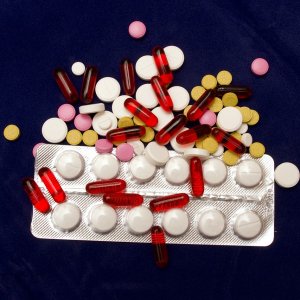Exploiting the Mexican Pharmaceutical Market’s Capacity

STORY INLINE POST
Q: What are INEFAM’s main strengths as a key player in the pharmaceutical sector?
A: INEFAM is close to reaching its 14-year anniversary. Throughout the years, we have created business intelligence tools for our clients considering the different steps in the drug purchasing process, from the tender announcement to its prescription. All our solutions are based on publicly-available hard data as we strive for full transparency with our clients. INEFAM is also dabbling into the medical devices sector by studying the complexity of these kinds of purchases. Medicines are among the Top 5 government purchases, meaning that there is a great deal to study and analyze for our clients. INEFAM has had a successful history of understanding these dynamics. To date, we are working with 50 local and foreign companies.
The country is the largest Spanish-speaking country, which makes it an attractive market for the healthcare industry for foreign investment. Thus, it is important that this government focuses on providing more certainty to investors in all sectors.
INEFAM works closely with representative associations of the industry, such as CANIFARMA, AMIIF, AMELAF, ANAFAM and DILAMEG, to promote the positive interests for the market and build a realistic vision beyond the political agenda. We have successfully helped all our clients to identify market opportunities and important changes. We hope to do the same for the medical devices industry by understanding foreign trade and UNOPS purchases.
Q: What are the most challenging scenarios your clients are facing and how does INEFAM support them?
A: Since the beginning of the López Obrador administration, there have been radical changes in the healthcare sector. While I agree with the goal and commitment to eradicate corruption, I think the government acted hastily considering the projects they wanted to tackle. The people in charge do not fit with the profiles required for the position that it is a condition that impacts in decision making in pharmaceutical purchases like the new challenge with UNOPS purchases for the next years.
Medicine purchases have been a focus for the administration but with a terrible missing management. The pharmaceutical sector is concerned about the UNOPS purchasing scheme because this means the government is underestimating the previous work that companies have been doing to supply the public sector. Our data show how purchases had been progressing but the government decided to leave this aside and blame companies for its organizational issues in 2019 and even the first half of 2020 that led to medicine shortages as never seen. These issues even led to deserted tenders, which caused even more shortages. Late requests for medications also drove the government to deal with higher prices as there are many supply and logistical costs to consider. I see this scenario as a lack of leadership from the authorities to tackle this ambitious transformation.
Q: How disruptive has INSABI been for the pharmaceutical industry?
A: This reform has actually raised concerns as it seems to be rushed to comply with past promises. However, there is no stable background, which cannot possibly lead to a positive outcome. INSABI’s intentions are great but a proper change would take at least two to three years to be implemented with the right planning. Moreover, COVID-19 hit the government amid this storm of changes, sharpening the lack of organization and working frameworks.
For the patient, this is a very unfortunate scenario. We have already seen how cancer patients have faced medicine shortages, forcing them to turn to the private sector for their treatment when, in the past, this need was already met.
Q: How is INEFAM working to strengthen clinical research in Mexico and what have been the main challenges in this regard?
A: This sector has been haunted by bad decisions, such as the limited function of the Committee for New Molecules (as part of COFEPRIS). Mexico has the potential to become a reference on the subject of molecules and clinical research, spurring better outcomes for Mexican patients and for Mexican science. These decisions are pitiful.
Despite these unfortunate decisions, Mexico could participate in clinical research for a couple of COVID-19 vaccine developments. However, advances in the clinical research area could allow us to have a more prominent participation in Phase 2 or even Phase 1 trials. The market is competitive but its potential is greater. Some companies are already taking advantage of the opportunities, like Liomont that will be involved in production of the AstraZeneca-Oxford COVID-19 vaccine. This could serve as an incentive for the authorities to boost the industry but so far, there has been no such luck.
The country’s productive capacity in this industry is remarkable. Despite regulatory restrictions, companies have managed to keep improving and innovating to remain competitive, exporting around MX$30 billion (US$1.4 billion) a year.
Instituto Farmacéutico (INEFAM) is a private company that specializes in Mexican public sector market research, Sales2Government training and access strategies consulting








 By Miriam Bello | Senior Journalist and Industry Analyst -
Fri, 10/23/2020 - 13:23
By Miriam Bello | Senior Journalist and Industry Analyst -
Fri, 10/23/2020 - 13:23
















